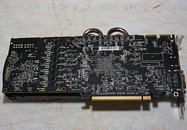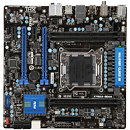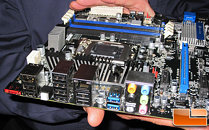
ASRock X79 Extreme11 New Iteration Pictured, Packs Stronger VRM
At CeBIT, ASRock already grabbed a lot of attention with its unveiling of the X79 Extreme11 motherboard. The motherboard was detailed to great lengths then. It appears like the design was still a work-in-progress, and the company has an even newer iteration. Pictured below is this latest iteration. You will notice how ASRock redid the CPU VRM. While the one shown at CeBIT packed a 16-phase VRM, this one steps it up to 24. On the obverse side of the PCB, it squeezed in chokes for all 24-phases, and compact Driver-MOSFET (DrMOS) chips for 12 (probably the other 12 are located on the reverse side of the PCB). The first iteration shown at CeBIT used LFPAK MOSFET design. A DrMOS combines up/down FETs and driver IC into a single, space-efficient package. Companies like Renesas have held interest in innovating with DrMOS chips, even compacting them further. The rest of the board is identical to the one pictured at CeBIT, except that the Creative Sound Core3D chip has the signature plastic cover over it, which can be found on Creative's Sound Core3D discrete sound cards.






































